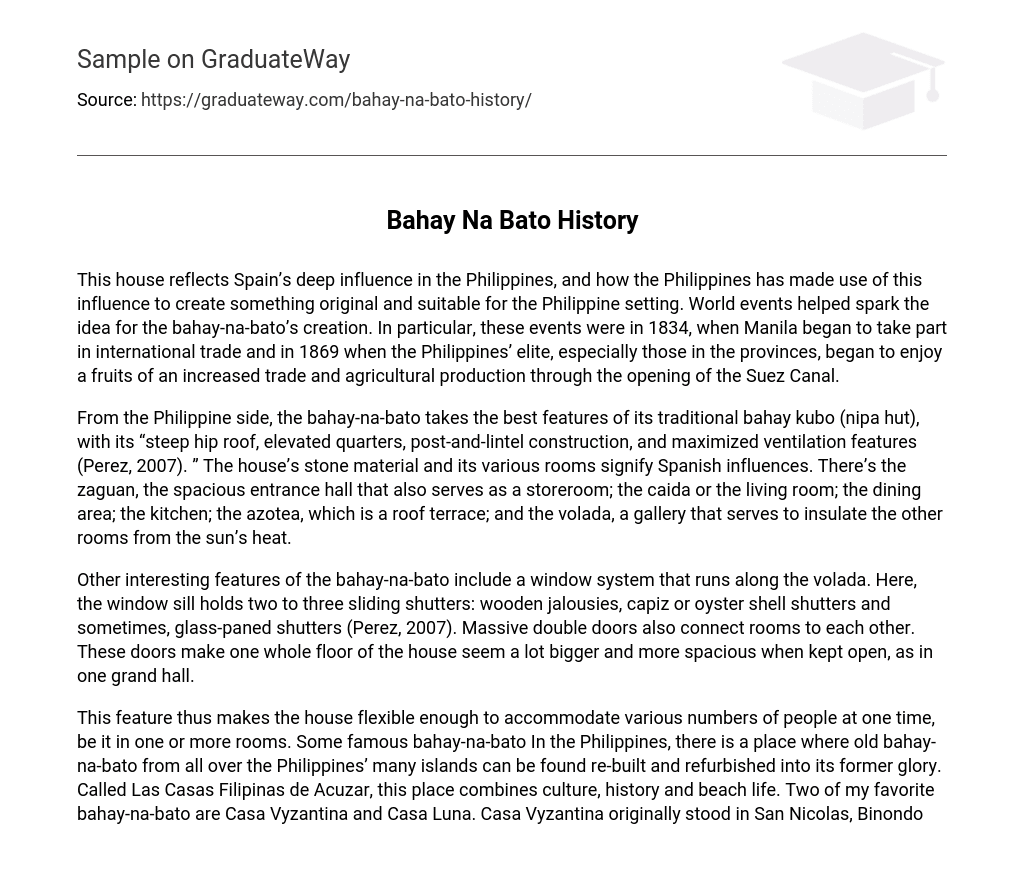This house exemplifies the profound influence of Spain on the Philippines and how the country has incorporated this influence to create a distinct and appropriate architectural style called bahay-na-bato. The inspiration for this style stemmed from major global occurrences, including Manila’s involvement in international trade in 1834 and the inauguration of the Suez Canal in 1869. These events resulted in amplified trade and agricultural prosperity for the upper class residing in various provinces across the Philippines.
The bahay-na-bato from the Philippines combines elements of the traditional bahay kubo. It features a steep hip roof, raised quarters, post-and-lintel construction, and enhanced ventilation (Perez, 2007). The house incorporates stone materials and has multiple rooms that show Spanish influences. These rooms include the zaguan, which serves as both an entrance hall and storeroom; the caida or living room; the dining area; the kitchen; the azotea or roof terrace; and the volada or gallery, which provides insulation against sunlight.
Among the notable characteristics of the bahay-na-bato is a unique window system situated along the volada. This system encompasses a window sill that accommodates two to three sliding shutters made of various materials such as wooden jalousies, capiz or oyster shell shutters, and occasionally, glass-paned shutters (Perez, 2007). Additionally, the house features large double doors that connect different rooms. When left open, these doors create a sense of expansiveness and enhance the spaciousness of an entire floor, resembling a magnificent hall.
This feature thus enables the house to effectively accommodate different numbers of people at any given time, whether it be in one or multiple rooms. In the Philippines, there is a destination known as Las Casas Filipinas de Acuzar, where old bahay-na-bato from various islands across the country are reconstructed and restored to their former magnificence. This location blends together cultural heritage, historical significance, and beachfront living. Among my preferred bahay-na-bato structures are Casa Vyzantina and Casa Luna. Casa Vyzantina was originally located in San Nicolas, Binondo.





